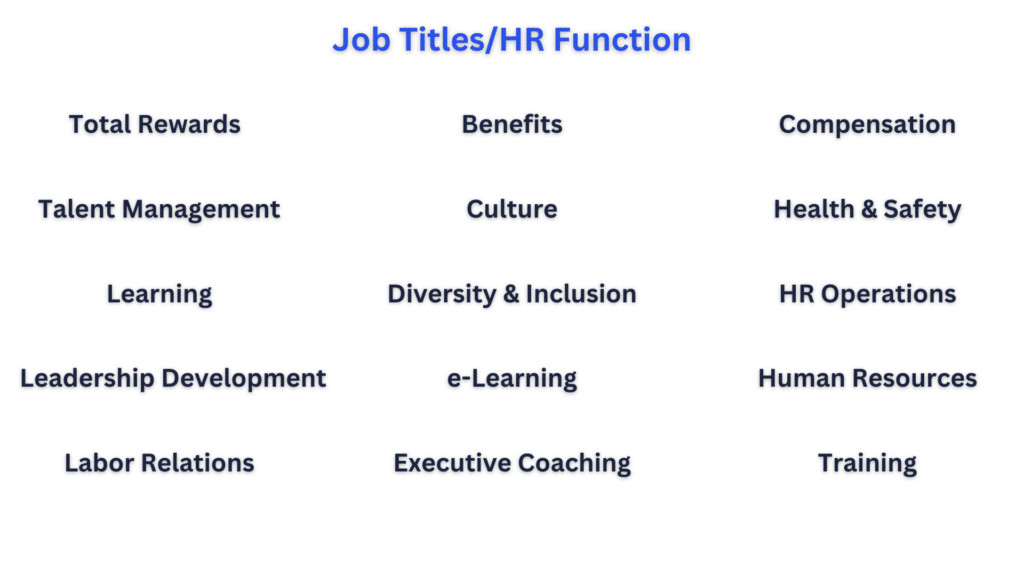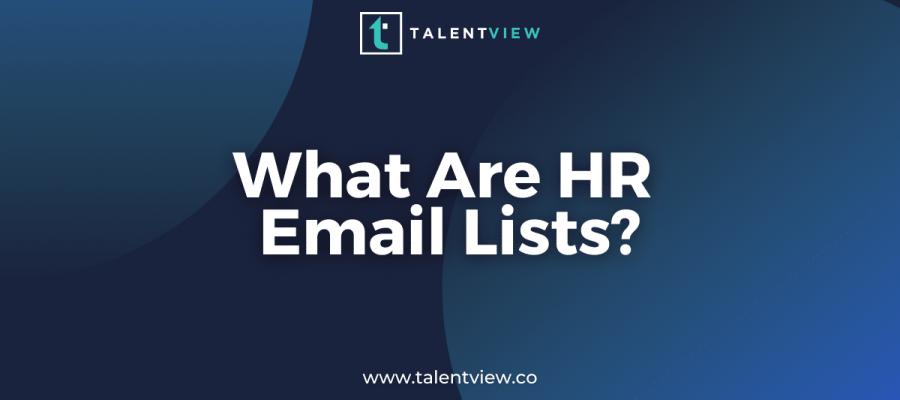HR email lists help sales and marketing teams deliver campaigns across multiple channels like ads, email marketing, cold calling, and social media platforms, as an example.
These email lists can be helpful in connecting with c-level executives, directors, managers, and individual contributors alike. With these lists you can find email, phone, LinkedIn profile, and job function of contacts to build targeted lists.
HR Email Lists Key Points
Verified Contact Information
Most email lists don’t have human-verified information. This wastes time and ultimately limits your opportunities because you end up prospecting the wrong people. Human-verified, regularly updated contact information will yield the best results.
In addition to providing the best results, there are other benefits such as emails not going to spam and phone numbers reaching the correct people. When your email domains and phone go to spam, you hurt your entire campaign and ultimately limits the people you can connect with.
Creating Highly Targeted HR Email Lists
With the human-verified contact information, you can design highly targeted lists to prospect. This means you can prospect with confidence knowing that you are able to email, call, or connect on social media with people in your target demographic.
Criteria such as company size, revenue, industry, or intent help sales and marketing teams create highly specific, targeted lists and increase opportunities. Using intent data for your HR email lists show a 30-40% uptick in meetings set. Learn how to use intent data here.

Example of a highly targeted list:
-
-
- Leadership Development (Job titles in Leadership Development filter)
- Mid-market (Number of employees filter– 501-1,000 employees)
- Automotive Industry (Industry filter)
- Directors and VPs (Management level filter)
-
Filtering your HR email lists will provide you with a number of different benefits such as personalized messaging, clear offering and call-to-action, and ensures you’re speaking with the exact people you are looking to start conversations with.
Deliverability and accuracy
Making sure that your main points of contact are going to the correct people is incredibly important. Not only does calling the wrong number or emailing the wrong person waste time, but it can also result in your phone number or email being listed as spam. To avoid that, we recommend a list that has verified phone and email.
Accuracy in your HR email lists would rely on desired demographic you are trying to connect with. Accurate contact data in your HR email list will save time and increase your meetings set and ultimately, sales closed.
Job Titles
Finding the right people for your email list is important. You want accurate job titles and descriptions because different levels of seniority have different job descriptions and buying power.
Having accurate job titles will save you time and positively affect your messaging in campaign design. This also helps your prospecting efforts by ensuring you are reaching the correct audience at all times.
Who are on an HR Email Lists?
The contacts on HR email lists will be individuals who are in the human resources department. This can range from titles including anything from Recruiting to Learning & Development and Benefits, just to name a few.
Here’s a short list of contacts you might see in an HR email list– all of which may range in seniority from C-level, Vice President, Director, Manager, and Individual Contributor:

HR departments will differ from organization to organization. For instance, in companies smaller than 500 employees, you’ll likely only see general HR contacts in their organization. This doesn’t disqualify them from purchasing certain products and services, it just means that you’ll have one to five HR professionals covering a handful of different HR functions. Here are a few examples of general HR contacts in smaller organizations:
General HR Contacts
- Human Resources
- Payroll
- Leadership
- HR Operations
In mid-market and larger organizations, you’ll see more specialist HR contacts. Areas of HR that have more budget and specific focus on different HR functions. Specialist HR contacts tend to have one focus, rather than covering numerous functions, like a general HR contact would. Here are a few examples of specialist HR contacts:
Special HR Contacts
- Compliance
- Employee Benefits
- L&D
- Health and Wellness
- Recruiting
- Workplace Safety
- Training
- DE&I
When building or buying an HR email list, it’s important to know which HR professionals you’re most likely to target. This will give you a guide on which professionals are most receptive to your product/service solution.
Custom-Built
In many cases, custom-built lists come from large databases. For instance, TalentView is a B2B contact database 100% focused on HR. Through a database like TalentView, you can custom-build your email list simply by using the custom search criteria.
Let’s say that you wanted to get hyper-specific about who you wanted to prospect. Maybe you wanted to create a search by company revenue, number of employees, and with a learning and training job title. Perhaps you only wanted to see contacts that were a VP or c-level executive as well. Custom searches can look many different ways, depending on what you’re looking for.
As an example, let’s say you’re looking for Learning professionals at companies 1,000-10,000 employees, that are Director and above seniority level. Here’s what your filtered search would look like:

Custom Sequencing
Once you’ve collected the important contact information you need for your HR email list, it’s time to prospect the list. Having a calculated infrastructure in your sequencing to attract new buyers from your list will be key.
Outbound looks different in every organization. When prospecting HR contacts from your list, messaging, cadences, call scripts, offer, and campaigns will generally be differ depending on title, seniority, and company size (just to name a few).
When it comes to customizing your sequences, it’s best to have an HR email list that you can filter down to job title. In our experience, when you execute campaigns directed toward specific job titles and management levels you accomplish a few things that will lead to greater success:
-
Sequence messaging is more clear
- When you target specific job titles or levels of seniority– or both– your offer, script, messaging in general will be much more clear. The reason is because different job titles and levels of seniority having different levels of buying power, sets of skills, needs, uses for what you’re offering, etc. By targeting “VPs of Sales,” in a campaign rather than just sales titles, you’ll have a much higher chance at speaking directly to what a VP of Sales needs, because you have a good idea of what their challenges are on a day-to-day basis.
-
Valuable data on your offer
- Sure, you hope every campaign and offer goes well, but that’s not always the case. When you narrow your campaigns and sequences down to specific job titles and seniority levels, you get a sense for if what you’re offering is even valid to those job titles and seniority levels. Take note of every campaign and sequence you run. The data you get from these campaigns will tell you a lot about what to offer and how to offer it.
Wrap Up
HR email lists should provide value to your organization’s prospecting efforts. For your most accurate results, be sure to consider the above key points.
The best HR email lists will have verified contact information, that’s in your target demographic, and delivers real results. Use your HR email list to start more conversations and close more deals!
